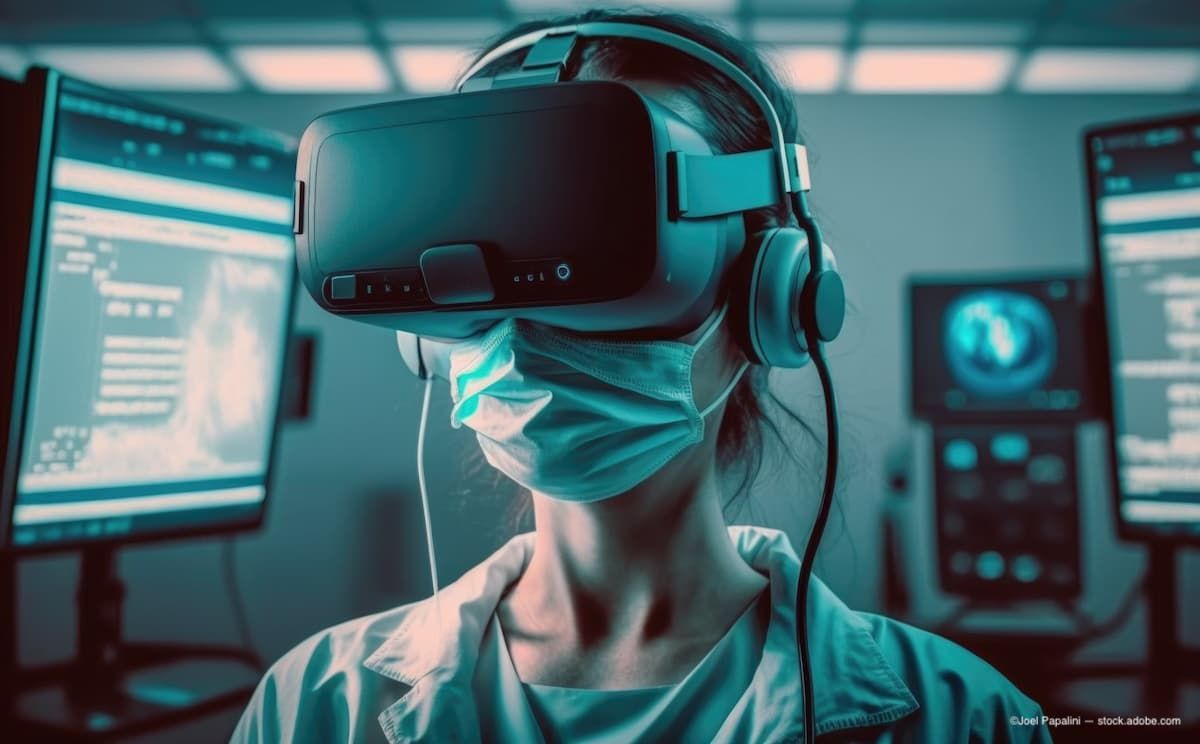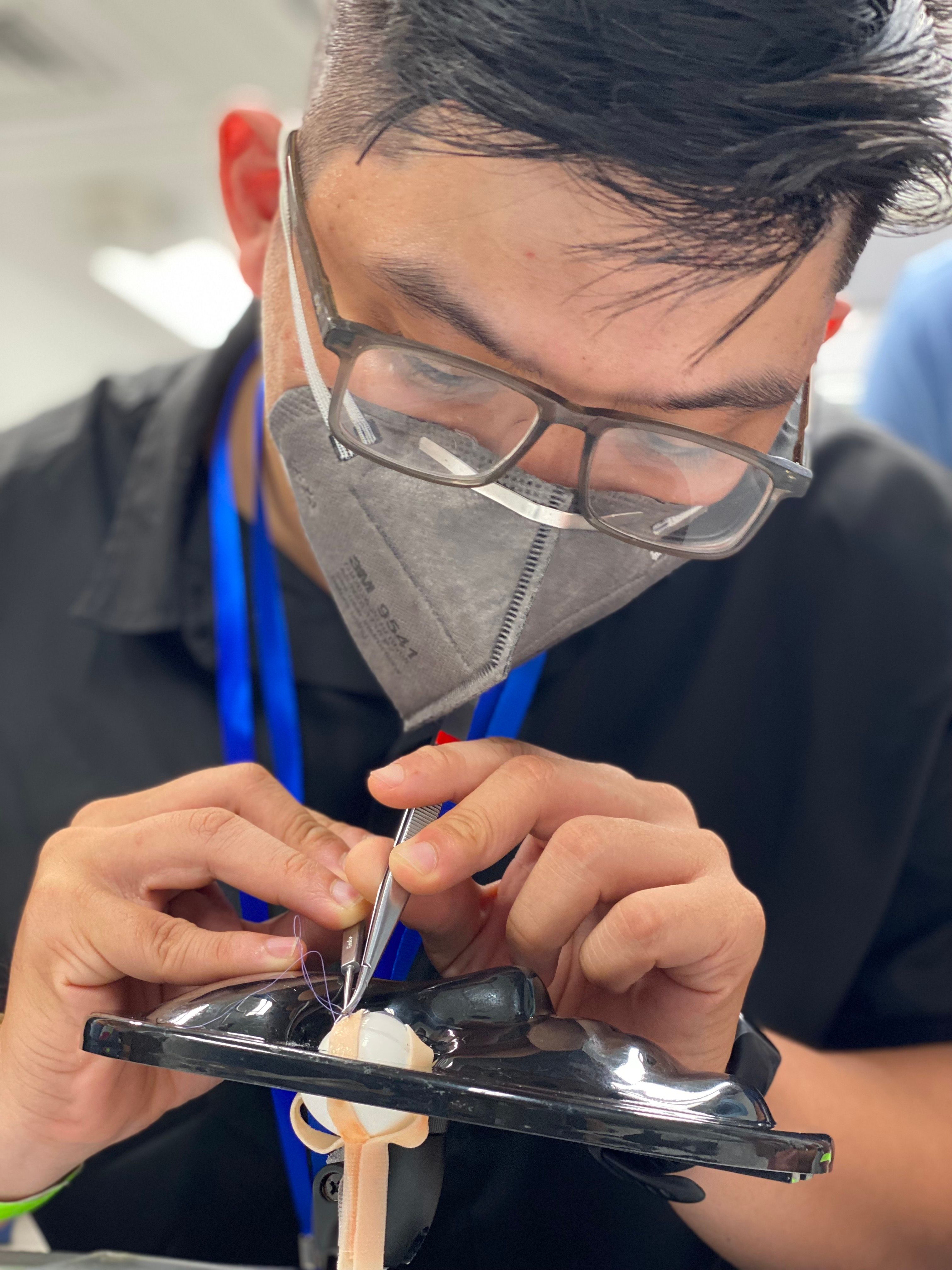News
Article
Simulations, telementoring drive successful training efforts
Author(s):
Orbis International physician spotlights the latest trends for cataract surgery training.

Cataract surgery is one of the most common procedures in ophthalmology, and learning surgical skills for cataract removal is a major focus of the training for ophthalmologists and ophthalmology residents.
Physicians at Orbis International are shifting the paradigm when it comes to training for cataract surgery with simulation and telementoring. Maria Montero, associate director of Clinical Services for Orbis International, detailed current training opportunities and trends here and in developing nations served by the Flying Eye Hospital.
According to Montero, cataract surgery is one of the most reproductive surgeries that exists, and the procedure itself has been the same for several years, which is phacoemulsification for cataracts that are not very hard, and then either extra cap or small incision cataract surgery for cataracts that are very hard in people that have had them for years and years.
“What has changed is how to achieve a 20/20 vision faster, maybe on the first day of recovery, and to have all patients get this result quicker,” Montero explained. “That being said, what has changed is the machines, and the technology around the technique itself.”
A key change in phacoemulsification, Montero noted, is the IOL calculations and the lenses themselves, including the materials they are made of.
“People really want to have their close vision fixed so that they don't have to wear glasses, and also an intermediate vision,” Montero noted. “Ophthalmologists have developed new intraocular lenses that are not only monofocal, meaning that the patient can see from afar, but there are also trifocal, which has the near, the middle, and the far side, and extended depth-of-focus intraocular lenses, which are lenses that react to whatever your eyes are watching so that they can help you see whatever it is that you're working on, whether it's very close, near or far.”
A doctor is practicing strabismus surgery skills on an artificial eye in Can Tho, Vietnam on board the Orbis Flying Eye Hospital. (Image courtesy of Orbis International)

When it comes to inflammation a day after surgery, Montero said surgeons are creating smaller incisions for surgery.
“We are up to 1.8 millimeters for cataract surgery, which is very, very little,” she pointed out. “It's amazing to see how all the instruments go into the eye, but by this incision that is so tiny. So I think that that's mainly what has changed in terms of the surgery itself.”
Amid this evolving technology in cataract surgery, young ophthalmologists still face plenty of hurdles when it comes to performing the procedure, with Montero noting one hurdle being access.
“Access to knowledge is a big challenge in many of the countries where we work. Ophthalmologists in these regions cannot keep up with new technology, or they don't have access to the latest technology,” she said. “So, they are just using the technology that has been in their hospitals for years and years, and are not able to try the newer technologies.”
There also is a lag in access to simulation training in some emerging nations where simulation tools are not readily available.
“Simulation training empowers residents in doing their own surgeries,” Montero said. “Of course, it's not the same to have your first hands-on experience on a real, breathing patient as doing it through simulation, when you know that nothing is going to happen if you mess up. These tools are critical to help surgeons develop their skills in a safe environment to avoid patient complications down the line. That’s why Orbis is working to bring this simulation training technology to the areas that need it most.”
There also are different types of simulation, and Montero noted that training on the Orbis Flying Eye Hospital is tiered, escalating the level of simulation.
“We start with virtual reality simulators, which is like a video game,” she said. “So, either you are looking through a microscope that is modeled exactly after the microscope that you would see in a real surgery, or all the tools that you use and all the images that you see are pretty much the same.”
Virtual simulations allow young ophthalmologists to immerse themselves in the procedure, going through the different steps of the surgery. They may start with abstract exercises that have the feel of a video game in which they point at little dots or try to move one thing from another in an abstract way. The training participants complete tremor training, then capsulorhexis training, and then move on to the next level of exercises, like in a video game.
“If you do well, then you go on to the next level,” Montero said. “Then you move on to realistic scenarios, and you try that out. Once you've done that, what we like to do is move the training to the operating room. So in a real operating room with a real machine, with a real nurse as the real anesthesiologist, who are also doing simulation training, we create a scenario where the only thing that's fake is the patient.”
Students work with an artificial eye, which has the exact same measurements as the iris, and developers continue to improve the texture and the feel of each part of the eye to make the simulation as real as possible.
“When we move the residents to a scenario that's familiar to them, it is exactly the same,” Montero explained. “But the only thing that's different is, there's a human there. So that's the difference.”
The residents have gained confidence, having gone through the procedure countless times before in simulations, and the repetition helps them hone their skills.As they go through training, they can amass scores, allowing them to measure themselves against other residents.
“You get immediate feedback,” Montero explained. “We are human, and we like to compete, so all of the residents really enjoy it when they can see their scores, and they start to compete with each other. They get better because they're doing it again and again.”
The repetition not only refines their skills, but it builds the confidence they will need in the operating rooms, which Montero said is very important.
“You are not overthinking everything,” she said. “You know the steps, you've practiced the steps, so your mind already knows what's going to happen.”
Montero noted that the training and simulation also helps with hand-eye coordination before moving into an actual operating room setting.
“It's very good for the teacher,” she added. “If I'm teaching someone and I see them doing a procedure on a simulator, and they do very good work, with amazing results, then I'm more confident on letting the same resident do a surgery on a real human being.”
Another aspect is telementoring, which can help young ophthalmologists learn and grow as professionals, according to Montero.
“Telementoring feels like you're the guardian angel of a doctor that is in another country.” she explained, “I can watch a doctor conduct a surgery in real time and give them guidance, even if we are thousands of miles apart.”
Even in a virtual setting, a physician can offer mentoring, with tips on movements, technique and other points to the procedure, all with the goal of helping the young ophthalmologist blossom. In telementoring, an extra camera can be focused on the hands to see how the surgeon is moving outside of the eye.
“Maybe there's something that has to do with whatever issue they're facing,” Montero explained. “So we watch their hands, and we watch the surgery. So from afar, we can counsel them on what they're doing right and what they're doing wrong.”
Telementoring can be the next best thing to being there in person, and it can occur during simulations or later during actual surgeries. Montero noted that Orbis offers several programs for its training participants, and it is a safe way to try new techniques and refine surgery skills.
Montero added that simulations and telementoring should start as soon as possible during a residency,
“It helps you throughout your training and will give you more confidence in absolutely everything,” she said. “There also is a simulation for most of the subspecialties in the eyes, including retina surgery, surgical retina, medical retina, phacoemulcification, small incision, strabismus, and glaucoma. So there's a lot of good materials out there to try out.”
Montero added that simulation training is a win-win and is shown to lower the cost of complications for hospitals, too.
And Montero also noted that training is a team practice.
“In addition to ophthalmologists and ophthalmology residents, we train nurses, anesthesiologists, and biomedical engineers to work together as a team to ensure the best outcome for patients,” she said. “We all have to work together.”
Newsletter
Don’t miss out—get Ophthalmology Times updates on the latest clinical advancements and expert interviews, straight to your inbox.




